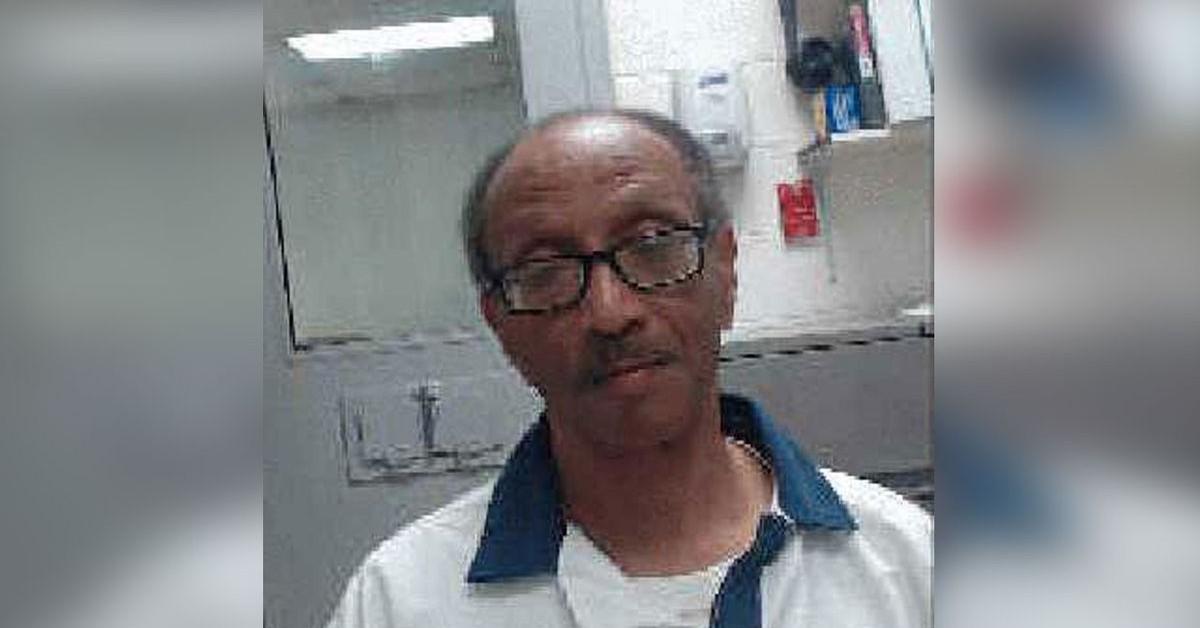The Atlanta Child Killer: How Serial Killer Wayne Williams Was Finally Brought to Justice

Editor's Note: This is Part 2 of our look at the Atlanta Children Murder case of the late 1970s and 1980s and the hunt for serial killer Willie Williams. For Part 1, check out our previous story.
Clifford Jones, 12, showed up on his grandmother’s doorstep in early summer 1980, looking forward to visiting Atlanta from his home in Cleveland.
Jones was a little guy, barely cresting 4-feet tall. He and his brother spent much of the summer looking for tin cans to earn a few dollars. On Aug. 19, only days before he would have returned to Ohio for the new school year, Jones was out collecting tin cans on his own when he decided to stay out past dark.
On Aug. 20, Jones’ body was discovered tossed in a dumpster. He’d only been dead for about five hours. Someone had dressed him in shorts and underwear after they strangled him, but the clothing didn’t belong to him.
Police immediately nabbed a viable suspect, but the man was ruled out based on the fact that one witness (a neighborhood boy) was, according to police reports, “retarded.” Other witnesses saw the suspect, the owner of a laundromat where Jones had gone the night he was killed, carrying a bag with Jones’ body to the dumpster.
Despite failing two polygraphs, the laundromat owner was never charged.
Observers began to accuse police of ineptitude and, worse, not caring about the lives of young black men.
KEYSTONE COPS OR INEXPERIENCE?
Law enforcement officials have responded to these charges by stating they cared deeply, according to National Public Radio WABE.
The evidence for inadequate police work is weak, but controversy over how the cases were handled has taken on a life of its own, according to The Atlanta Journal-Constitution.

Even though Atlanta was a sprawling metropolis, not all its cops were trained in the correct procedures for processing murder scenes or interviewing potential witnesses. As a result, some of the victims from 1979-1980 were misidentified.
The cop who found Charles Stephen,12, lying dead on a hillside threw a blanket over his body. This instinctual response contaminated the crime scene, mixing fibers from that blanket with others on the boy’s body. Stephen died from strangulation.
Detectives, including those on the task force, also faced challenges in trying to decide which killings were connected.
According to the investigator and author Chet Dettlinger, the task force constructed “The List” to link together similar murders from the late 1970s and 1980s in the Atlanta area. Dettlingler opined that 90 more murders should have made The List, but didn’t.
Similarities between victims were striking in many of these cases ‑— some knew each other, others lived in close proximity.
Dettlinger claims he saw a pattern emerge, but he was brushed off by Atlanta law enforcement. He could tell there was a strong geographic connection. The killer spent time in these neighborhoods and knew kids who knew each other.
That killer may not have been the only one, but he was picking kids off familiar streets–well-worn paths and avenues he knew like the back of his hand. He may have even grown up on those streets.
Ultimately, top cops like FBI profilerJohn E. Douglasconcluded, "forensic and behavioral evidence points conclusively to Wayne Williams as the killer of eleven young men in Atlanta."
Yet Douglas also noted there was "no strong evidence linking [serial killer Willie Williams] to all or even most of the deaths and disappearances of children in that city between 1979 and 1981."
TWO AARONS AND “PAT MAN”
Aaron Jackson had been good friends with Aaron Wyche, the 10-year-old discovered dead underneath a railroad bridge. Jackson, too, was found beneath a bridge.
According to The Crime Library, the police were somewhat confused by these details and the fact that the two boys knew each other. The crimes and crime scenes got mixed up by authorities.
Fortunately, in the murder of Jackson, 9, which occurred in November 1980, there was a reliable witness. A woman saw a man at the scene and approached the task force with the information, according to The Crime Library.
Whatever she told the authorities, her statement got mislaid, according to The Crime Library.
The cops had a new lead, however, from the mother of yet another victim.
“Pat Man” Rogers, 17, disappeared on Nov. 10, 1980. Pat Man had a connection to one of the first victims, Robert Evans, who was also a karate fan. In fact, Evans was going to see a karate movie the night he disappeared.
Pat Man loved Bruce Lee, but he loved singing even more. Around the time he disappeared – but before anyone knew he was officially missing – his mom was urgently looking for him. She had good news: she’d found a man in the music business who might be interested in managing Pat Man’s singing career.
The man’s name was Wayne Williams.

THE KIDNAPPING OF EARL TERRELL
Earl Terrell was a high-spirited kid who got into some trouble at the community swimming pool. On July 30, 1980, the 10-year-old got booted off pool grounds by lifeguard Olivia Hickson.
According to Atlanta’s Missing & Murdered, Terrell was seen that day sitting on the corner near the pool crying. He was also observed buying freeze pops from a nearby store, and trying to find a friend at a house near the swimming pool.
Terrell, a 3rd grader at Lakewood Elementary who lived with his mom, Beverly Belt, in a modest home not far from the pool. His aunt Vickie lived next door, and Terrell grew up with three brothers.
After July 30, the boy wasn’t seen alive again.
Vickie received a phone call the next day in which a man stated he had Terrell and wanted $200 for his safe return.
The police became suspicious when they discovered a kiddie porn operation across the street from the pool and learned Terrell was known to frequent the home.
They arrested John David Wilcoxen, whose home Terrell had visited, according to Terrell’s friends. Wilcoxen was a known child molester, and Terrell had been at his house in the past.
The kidnapper told Belt he’d taken Terrell to Alabama.

Finally, Mayor Maynard Jackson, who had made prior attempts to get FBI agents to come to Atlanta, had a bona fide reason to do so. Now one of Atlanta’s kids had been abducted to Alabama.
The FBI sent agents, who would arrive long before Terrell’s body was found.
It wasn’t until January 1981that a dog sniffing through the woods found Terrell’s body, along with the body of another boy, presumed to be Christopher Richardson.
Terrell was missing some of his clothing. One report notes that investigators may have left “body parts” (including teeth) at the crime scene. The scene itself was littered with clues, such as a cigarette butt, tossed out magnetic recording tape, porno magazines, and shotgun shells. Unfortunately, the Task Force would report fingerprints from the litter didn’t match with any likely suspects, according to Atlanta’s Missing & Murdered.
Wilcoxen was exposed as running a kiddie porn ring, but he was released as a suspect in Terrell’s murder, as forensics didn’t match, according to Medium. Among other factors, Wilcoxen targeted exclusively white children.
THE SHIFTING WINDS OF WINTER
The killer seemed to be choosing somewhat older victims, perhaps because he was more confident as he gained experience. By winter of 1980, he no longer favored only pre-teen boys.
In January 1980, a 14-year-old named Lubie Geter disappeared. He fit the profile perfectly — he was a young black man, found in the woods. He’d been strangled to death.
Some have posited that Geter, Terrell and William Garrett were killed by the same man or men: White pedophiles who knew all three victims. Witnesses connected Geter, Terrell and Garrett to the two child molesters who lived in the area.
Police had no other viable suspects.
The year 1981 would bring no relief, as Terrell and Richardson, their bodies skeletonized, were laid the rest in the same cemetery.
But Spring would bring some. The investigation would finally begin to yield promising leads as the task force collected more leads, better clues, and more experience.
THE BRIDGE
As summer came in 1981, Atlanta and its night stalker killer were beginning to feel the heat. Hot, humid days were around the corner, and the killer was trying to hide evidence.
How did the child murderer know the cops were closing in? A newspaper article reported that police had key fiber evidence – yellow and green nylon strands – tying the victims together. The fiber was used in carpets, but it wasn’t common. Investigators estimated only 1 in 8,000 homes in Atlanta had carpet with that fiber, according to History.com.
Now the killer began tossing his victims into the water, hoping the fibers would be washed away. By May, the task force had found five bodies in the Chattahoochie River. So they decided to stake it out, 24/7, according to the FBI.
They were dealing with a serial killer, the toughest kind of criminal to catch, but they could prove their case in court. The witnesses, the blood, and the fibers would make a case stick. But they needed to find the man who was dumping bodies.

In the early morning hours of May 22, weary detectives sipped strong coffee as they sat in their unmarked cars near the bridge. They heard a loud splash, only to find a vehicle driving across the bridge, according to Biography.com.
FBI agents pulled over 22-year-old Williams, who claimed he was on the way to meet a musician. They had no reason to hold him but took down his information, including the alibi.
They would soon find the body of Nathaniel Carter, 27, in the river. Williams was called back in for questioning. He failed the polygraph and his alibi turned out to be a lie.
Williams was arrested June 21, 1981, and convicted of two murders on Feb. 27, 1982, according to the FBI.
GUILTY AS SIN: PUTTING RUMORS TO REST
In October 2021, the Atlanta Police Department hand-delivered DNA from the child killings cases to a specialized lab in Salt Lake City, Utah. Sorenson Forensics has expertise in processing deteriorated DNA samples.
DNA technology has improved by leaps and bounds, and Atlanta authorities want to exploit that fact to put this case to rest. Sifting through the old samples may tie Williams conclusively to not only the crimes for which he was sentenced but others.
The new analysis is happening because Atlanta’s second Black female mayor, Keisha Lance Bottoms, vowed in 2021 to let the families know they are not forgotten, according to Alive News.

The evidence used to convict Williams is now over 40 years old. It hasn’t been sitting in a hermetically sealed vault but stored in boxes in the evidence room of an Atlanta Police station.
Lou Arcangeli, one of the detectives who oversaw this evidence, retired as a Deputy Chief from the Atlanta Police Department. WABE Atlanta interviewed Arcangeli, who was also present to see the 23-year-old Williams convicted of two counts of murder in 1982. He told WABE, “Of course, DNA at that time wasn’t really a part of police work. [It was] fingerprints, witnesses, and blood.”
Arcangeli was one of the detectives who helped convict Williams and he maintains the evidence was strong. More than 600 fibers linking victims to Williams, blood evidence. Six eyewitnesses connected Williams to victims just before they went missing.
But now, the DNA is degraded, and the people of Atlanta want more proof.
In 2007, DNA evidence from the crime scenes – including human and dog hairs – was re-analyzed. The human hair, found on the inside of the shirt of one of the male victims, came back as a 98 percent match to Wayne Williams.
The dog hairs had a 98 percent chance of belonging to Sheba, the dog owned by the Williams family.
Arcangeli, in his interview with NPR, points out that there is “a mathematical certainty” that Williams murdered at least 12 of the victims.
It’s why he is in prison, and many consider him the man responsible for most of the Atlanta Children Murders.
Become a Front Page Detective
Sign up to receive breaking
Front Page Detectives
news and exclusive investigations.
